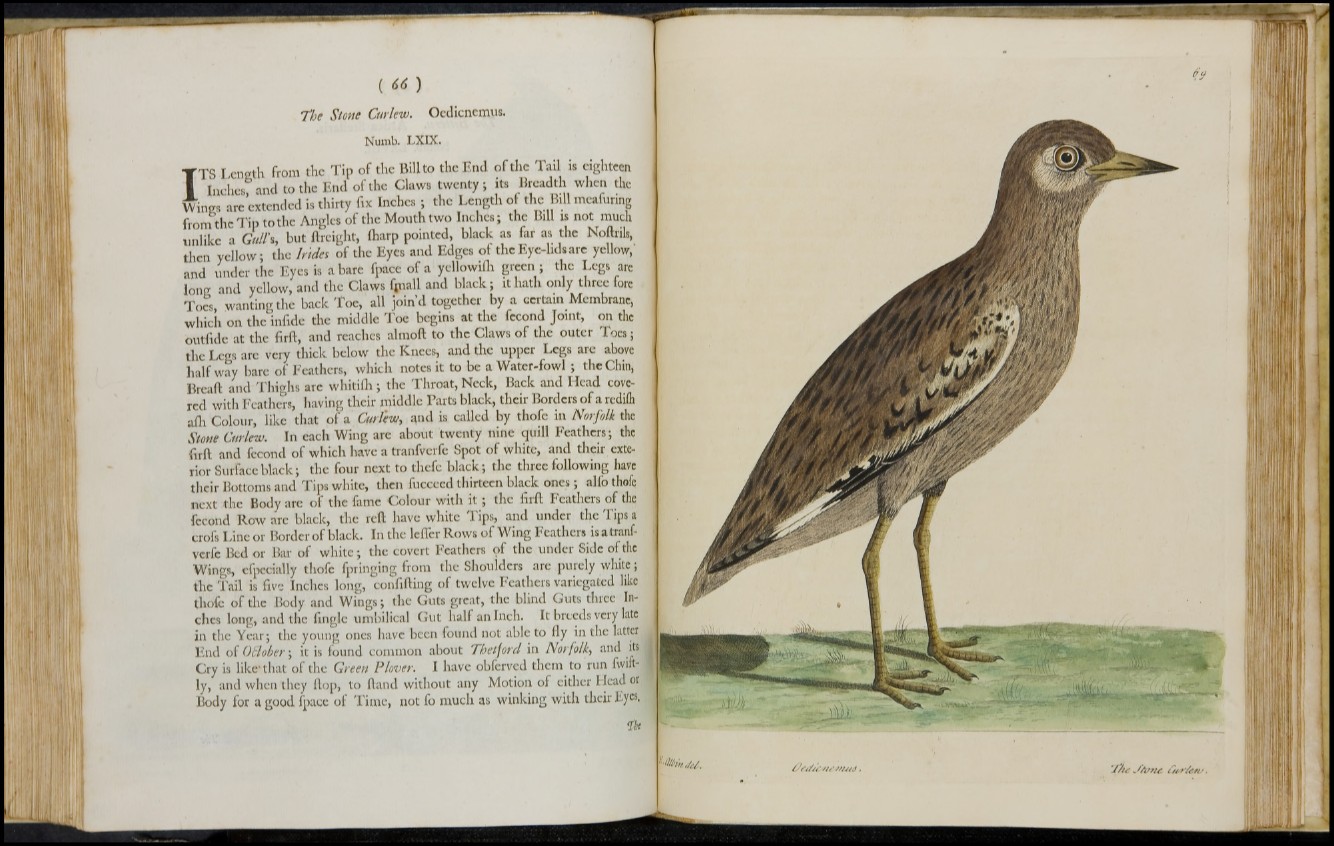
The Stone Curlew. Oedicncmus.
Numb. LXIX.
iTS Length from the Tip of the Bill to the End of the Tail is eighteen
Inches, and to the End of the Claws twenty; its Breadth when the
Wines are extended is thirty fix Inches; the Length of the Bill mcafunng
from the Tip to the Angles of the Mouth two Inches; the Bill is not much
unlike a Gull's, but ftrcight, iharp pointed, black as far as the Noftrils,
then yellow; the Irides of the Eyes and Edges of theEyc-lidsare yellow,-
and under the Eyes is a bare fpace of a yellowiih green ; the Legs are
long and yellow, and the Claws fpiall and black; it hath only three fore
Toes, wanting the back Toe, all join’d together by a certain Membrane,
which on the infide the middle Toe begins at the fecond Joint, on the
outfide at the firft, and reaches almoft to the Claws of the outer Toes;
the Legs arc very thick below the Knees, and the upper Legs are above
halfway bare of Feathers, which notes it to be a Water-fowl; the Chin,
Brcaft and Thighs are whitiih; the Throat, Neck, Back and Head covered
with Feathers, having their middle Parts black, their Borders of a rediih
aih Colour, like that of a Curlew, and is called by thofe in Norfolk the
Stone Curlew. In each Wing arc about twenty nine quill Feathers; the
firft and lccond of which have a tranivcrie Spot of white, and their exterior
Surface black; the four next to thefc black; the three following have
their Bottoms and Tips white, then fuccecd thirteen black ones; alio thofe
next the Body arc of the fame Colour with i t ; the firft Feathers of the
fccond Row arc black, the reft have white T. ips, and under the Tips a
crofs Line or Border of black. In the leflcr Rows of Wing Feathers is a tranf-
vcrfe Bed or Bar of white; the covert FeatherB of the under Side of the
Wings, cfpecially thofe fpringing from the Shoulders are purely white;
the Tail is five Inches long, confifting of twelve Feathers variegated like
thofe of the Body and Wings; the Guts great, the blind Guts three Inches
long, and the finglc umbilical Gut half an Inch. It breeds very late
in the Year; the young ones have been found not able to fly in the latter
End of Otlober; it is found common about Thet\ord in Norfolk, and its
Cry is like'that of the Green Plover. I have obferved them to run fwift-
ly, and when they flop, to ftand without any Motion of either Head ot:
Body for a good fpace of Time, not fo much as winking with their Eyes.
f it
The JttoTte .